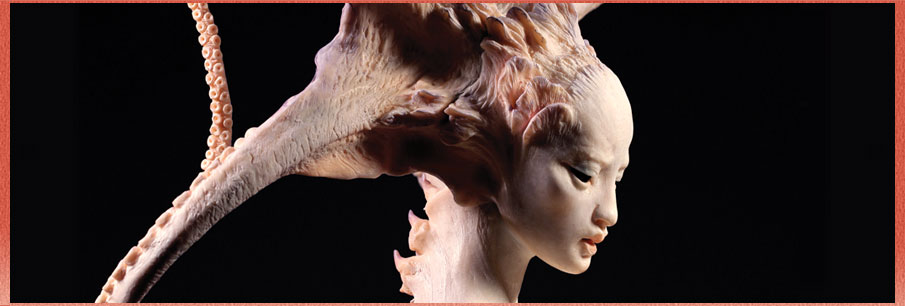A fellow artist wrote me to inquire about sculpting tools for fine detail. I'd been pondering the same subject. It's a case of "do as I suggest, not as I do." I'll
post part of my answer here, in hopes it may be useful:
A good question, tools, and funny you should ask, as they say: I've actually been
looking at my two favorite tools and realizing they're incredibly clunky for the size
critters I'm now making. I've been attached to them for ages -- years, I'm sure --
and just not taken the intelligent step of adding more and finer implements. I've been
using a plain old #11 exacto knife, and an odd, small burnisher really meant for
engraving:

I don't think any other tools touched Eros, whom you'll find below (except sandpaper, nail scissors on the tiny leaves made of copper foil, and toenail clippers for cutting wire). Now, this is silly -- if I saw somebody else laboring on tiny things with the above, I'd
point out that there are much finer tools available. Indeed, I think I'll order
some soon myself. The best choice I know of, for my particular needs, at least, seem to be the 'Perfect Touch' tools. The site:
PerfectTouch.com
Some like the wooden ones, some the metal. Ideally, one might have some of both, I
should think.
Now, back to my great, blunt burnisher and the work table! You've put it well, Deborah:
the burnisher is such a habit that it did indeed become like an extension to my hand.
I know I've been equally attached to other tools before, usually faithfully, one at a time. Monogamously. That's sort of unwise, given that when I lose the favored tool, I'm temporarily pitiful and helpless, till I bond with the next one...




